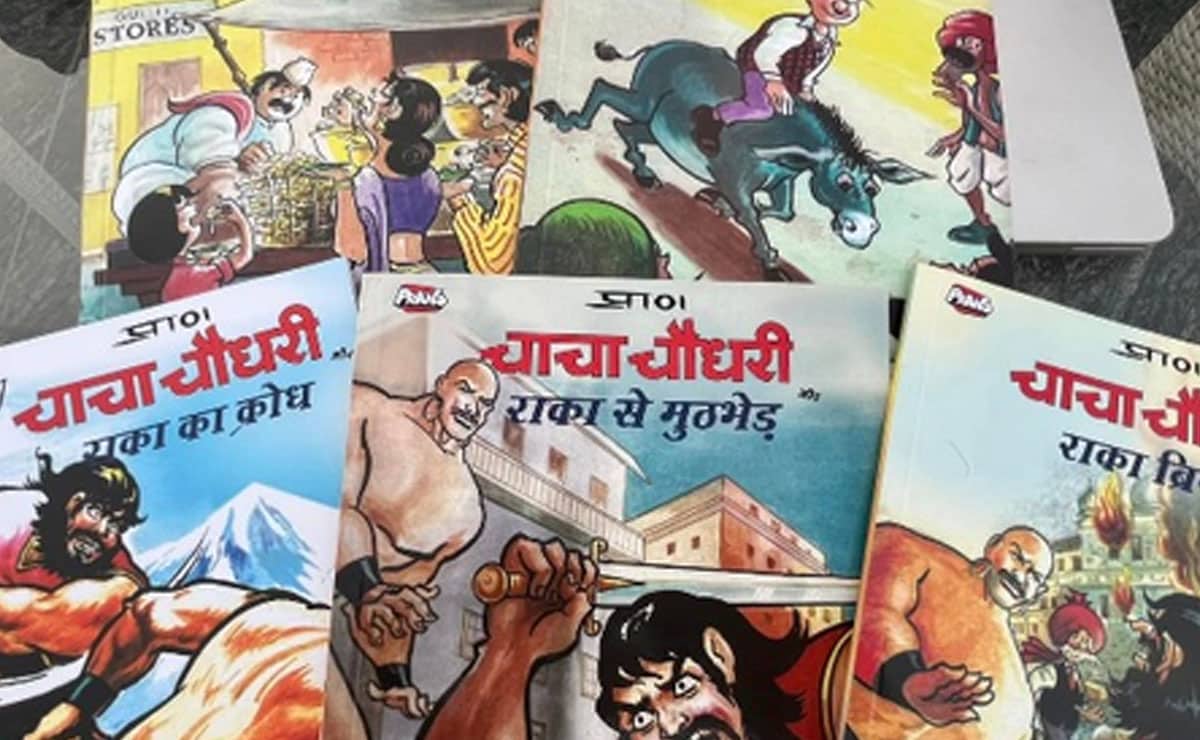Beyond superheroes: How desi comics are shaping a new India
India’s comic book industry is undergoing a creative renaissance, led by a new generation of homegrown creators who are transforming the nation's cultural narrative.

New Delhi: India’s comic book industry is undergoing a creative renaissance, led by a new generation of homegrown creators who are transforming the nation’s cultural narrative. Long overshadowed by Western imports, indigenous comics are now front and centre, weaving together mythology, social commentary, and contemporary themes with striking originality.
The comic journey in India began in the 1960s with Indrajal Comics, which introduced Western icons like The Phantom to Indian readers. However, it was in 1967 that a real breakthrough came with Anant Pai’s Amar Chitra Katha (ACK), a pioneering series that presented Indian mythology, history, and folklore in an engaging visual format. Selling over 100 million copies in more than 20 languages, ACK became a cultural cornerstone in Indian households.
By the 1970s and ’80s, a new wave of Indian superheroes emerged through Raj Comics. Characters like Nagraj, inspired by serpent mythology and Super Commando Dhruva captivated readers and defined what many now recall as the “golden age” of Indian comics. This era flourished until the 1990s, when the rise of television, video games, and digital media gradually drew audiences away from print. Fast forward to today, the industry is experiencing a robust revival.
Also Read:Nifty, Sensex see sharp decline this week amid H-1B, pharma tariff concerns
With the widespread penetration of smartphones and affordable Internet, comics are reaching readers not just in metropolitan centres but deep into Tier-2 and Tier-3 cities. Events like Comic Con India, which is the desi version of the hugely-popular international event Comic Con, have evolved into major cultural gatherings, spotlighting local talent and driving commercial growth. Globally, this resurgence is part of a larger trend. According to Mordor Intelligence, the global comic book market is projected to grow from $8.14 billion in 2025 to $23.61 billion by 2030 with India emerging as a key contributor.
What distinguishes the current wave is the bold creativity of Indian storytellers who are breaking free from the notion that comics are solely for children. Their stories now appeal to adults and international readers, blending vernacular nuances with universal themes. Take Chacha Chaudhary, created by Pran Kumar Sharma in 1969.
The red-turbaned, bespectacled hero, “whose brain works faster than a computer” along with Sabu and Channi Chachi, tackled everything from petty thieves to social issues like corruption and environmentalism. Chacha remains a beloved icon across media, from television to animation. Nagraj, launched in 1986, stood out with his snake-based powers rooted in Indian folklore. Over time, his narratives matured, delving into moral ambiguity and darker story arcs—mirroring the evolution of reader sensibilities.
Gotham Chopra and Jeevan J. Kang’s The Sadhu introduced a British soldier who transforms into a mystic in colonial India. Mixing supernatural elements with spiritual themes, it struck a chord with global readers as well. Sarnath Banerjee’s The Harappa Files (2011) offered a wry critique of post-liberalisation India, capturing urban dissonance through illustrated vignettes. His earlier work, Corridor (2004), explored the fragmented lives of Delhi’s Connaught Place dwellers using a blend of text, photography, and illustration.
In Kari, Amruta Patil examined gender, politics, and myth through a deeply personal lens, marking a significant shift in how comics could explore identity and emotion. Appupen’s Legends of Halahala, a wordless graphic novel, pushed visual storytelling into surreal, philosophical territory—proving that silence can sometimes say the most, according to an article in news website ‘India Narrative’.
Today, Indian comics are thriving across digital platforms, multilingual formats, and vibrant fan communities. They reflect a society grappling with its past while boldly shaping its future. From the timeless appeal of Chacha Chaudhary to the avant-garde brilliance of Legends of Halahala, homegrown comics are no longer just entertainment—they are a vital expression of India’s evolving cultural identity.
FRor More Update Visit Munsif News 24×7 (@MunsifNews24x7) / X
